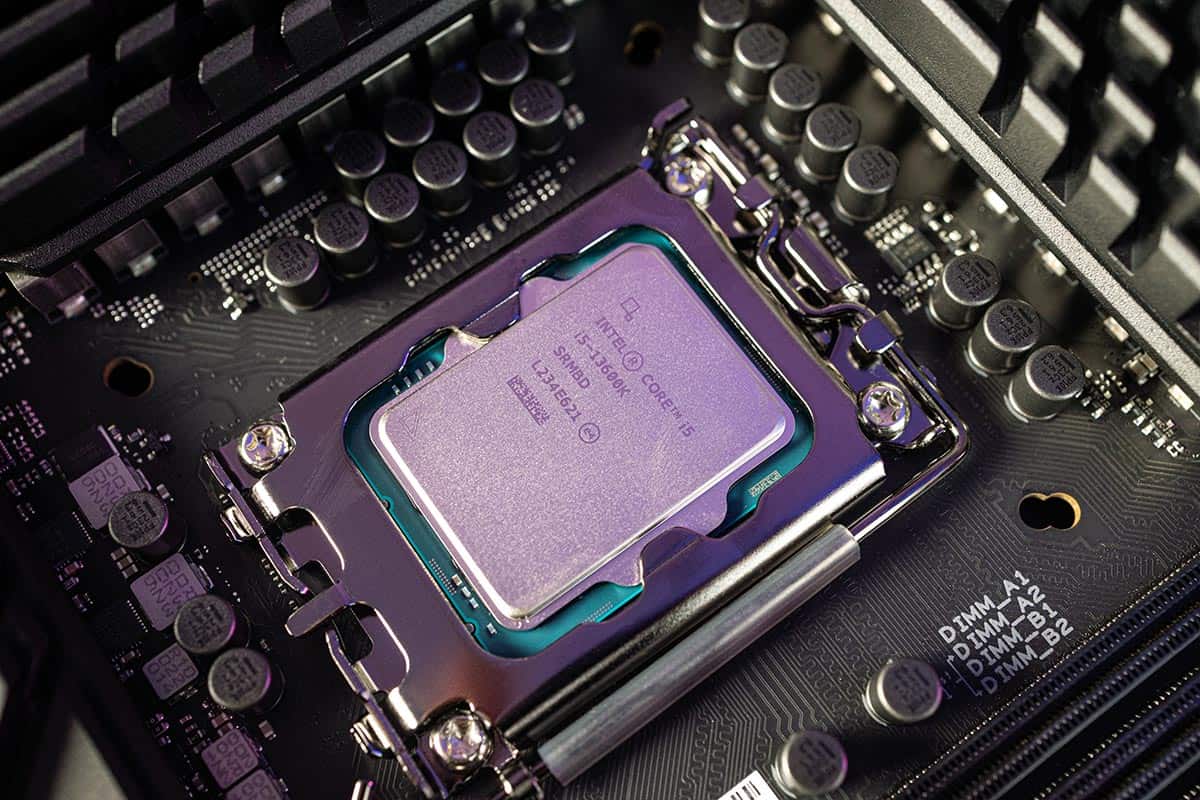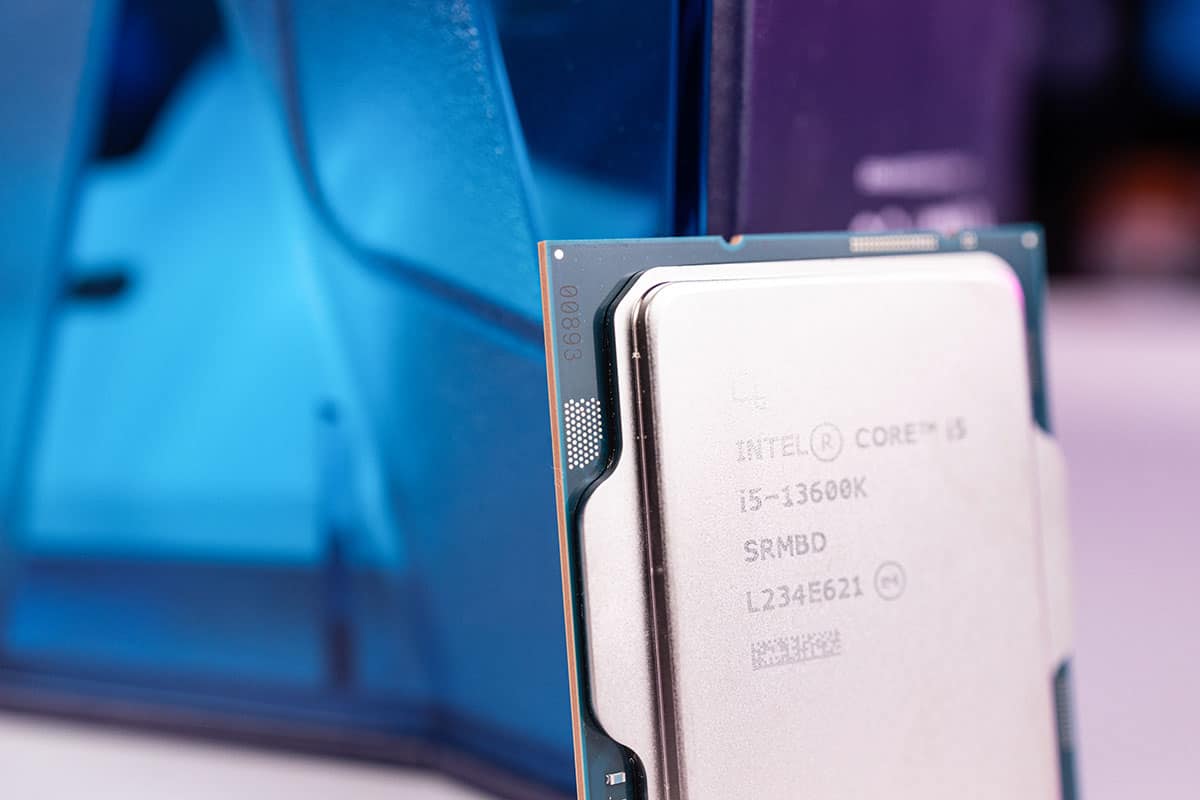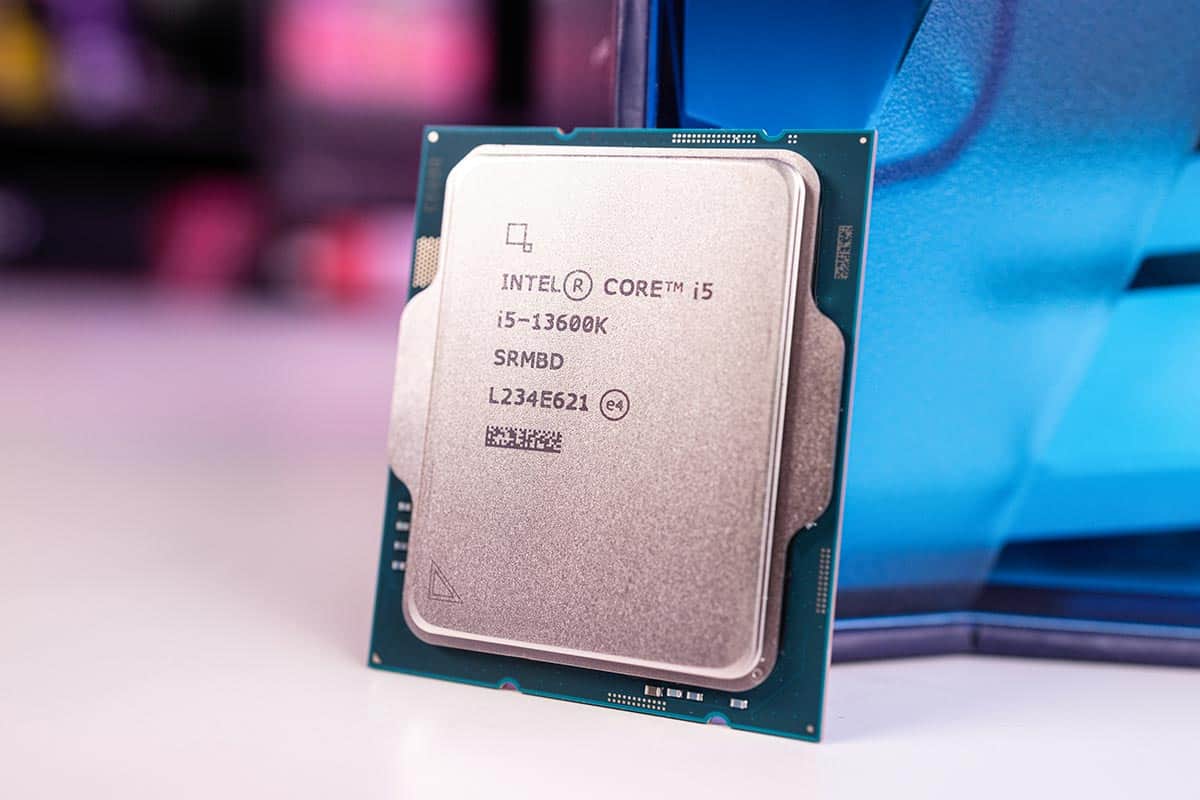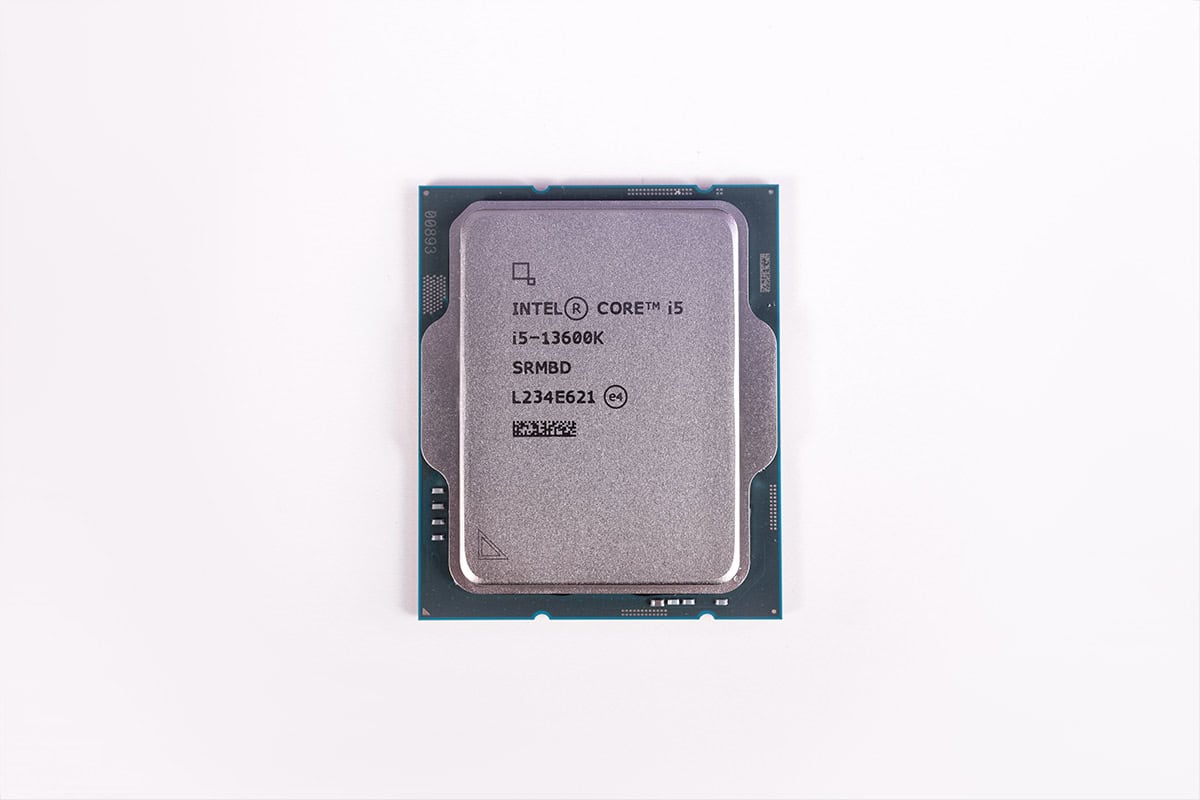Intel Core i5-13600K review – is it still worth it?
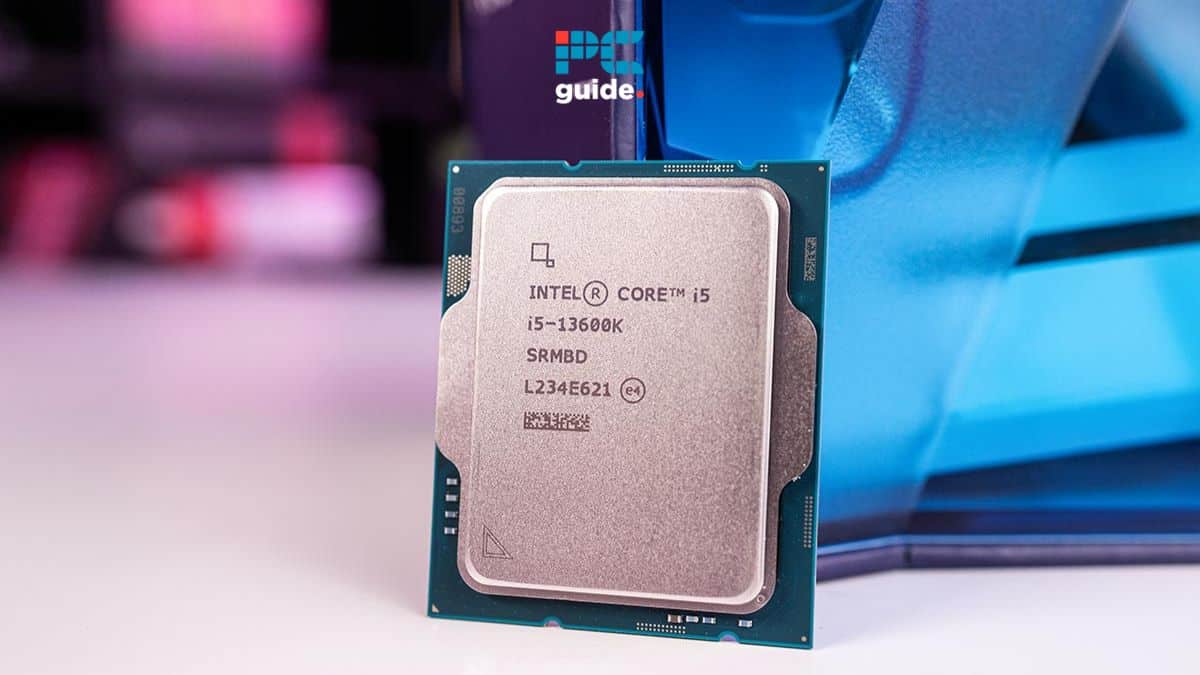
Table of Contents
The Intel Core i5-13600K was released back in 2022 and still very much holds up today. This is the little 14-core, 20-thread CPU that could, and has widely become one of the more popular CPUs on the market for those looking to get a great CPU on a reasonable budget. We consider the 13th gen to be the best value right now, as the 14th gen was just a refresh of the existing Raptor Lake architecture and offers a minimal performance increase at the lower end for much more money.
We’re going to put the i5 through its paces and offer our insight into how we feel about this CPU and where it stands in the market today. Spoiler alert, we love this CPU, and for every good reason. Here’s our Core i5 13600K review.

- Cores: 14 (6P-8E)
- Threads: 20
- Boost speed : P-Core 5.1GHz / E-Core 3.5GHz
- Base speed: P-Core 3.5GHz / E-Core 2.6GHz
- L3 Cache: 24MB
- TDP: 181W
- Platform: Intel (LGA 1700)
An excellent CPU through and through with fierce single and multi-core performance for the money. The LGA 1700 and DDR4 + DDR5 compatibility makes it a fantastic choice no matter what rig you have.
- Perfect for high-performance gaming on a budget
- Editing and productivity performance supported by high mufti-core scores
- Very competitively priced, can be found on sale for cheap too.
- Just as good as the 14600K, but costs less.
- Have to upgrade to LGA 1700 if you have an older motherboard
- Performance is cut when using DDR4 – but it is nice to have the choice.
CPU Specifications
The specifications of the 13600K speak for themselves, on paper, this CPU should be able to handle a great deal if paired with a decent GPU. We have outlined all of the specifications you need to know below:
Cores: 14 (6P-8E)
Threads: 20
Boost speed: P-Core 5.1GHz / E-Core 3.5GHz
Base speed: P-Core 3.5GHz / E-Core 2.6GHz
L3 Cache: 24MB
TDP: 181W
Platform: Intel (LGA 1700)
In terms of design, the i5-13600K is evolutionary instead of revolutionary. As with its Alder Lake predecessor, the 13th Gen i5 CPU is once again built on hybrid architecture with a mixture of P-cores and E-cores. There’s a total of 14 cores and 20 threads with a base clock speed of 2.5 GHz and a boost clock speed of up to 5.1 GHz. While far from the fastest chipset made by Team Blue, as some top-end models like the i9-14900K can do 6 GHz, this is still quick enough for gaming and productivity tasks.
Speaking to the power draw, this chipset features a 125W TDP which is on par with other Raptor Lake processors and fairly standard by Team Blue standards if a little high for a mainstream chip. For context, the AMD Ryzen 5 7600X comes in with a 105W TDP with a similar level of performance. Unlike the aforementioned AMD chip, however, the i5-13600K features support for both DDR4 and DDR5 RAM so you won’t necessarily need the best RAM for gaming here.
The 7600X is a great AMD alternative to the 13600K
The performance is similar, however, the 13600K is slightly better concerning multi-core performance. They are also both excellent gaming CPUs, with the two performing similar in 1440P and 1080P.
If you’re already running an Alder Lake CPU and are considering upgrading then it should be as straightforward as a BIOS update, especially as this chipset is selling at a substantially discounted price. That’s because it’s an LGA 1700 chipset the same, which has also been kept by its successor, too. It’s unconventional for Intel to retain an architecture for a handful of years like this, but it’s good to ensure longevity, even if this chip only acts as a stopgap for you. Let’s get into the performance below.
As you can see, the Intel CPU has both the core speed and the core strength to back it up. Couple that with the generous 24MB of L3 cache, and Intel’s revered big.LITTLE core technology and you have the makings of a formidable mid-range CPU. But how do all of these specs translate into performance?
Performance
We tested the 13600K in a variety of scenarios, ranging from real-world to synthetic. This meant that we could gain a greater understanding of how the CPU performs in various workloads. We should also outline the rig that was used to test the 13600, as we will need to factor that in when discussing the performance. The components used to test the Mid-range Intel CPU Are as follows:
- ASUS ROG RYUJIN ii 360 CPU cooler
- ASUS ROG Maximus Z790 Extreme
- Corsair Vengeance 16GB DDR5 @5600Mhz
- MSI Gaming X Trio RTX 3080
- Fractal Design ION+ 860W
- Samsung 860 Evo
As you can see, the rig we concocted to test this CPU is no slouch, so bear that in mind when the results roll around. Speaking of, here’s how the 13600K did in synthetic benchmarks.
Synthetic benchmarks
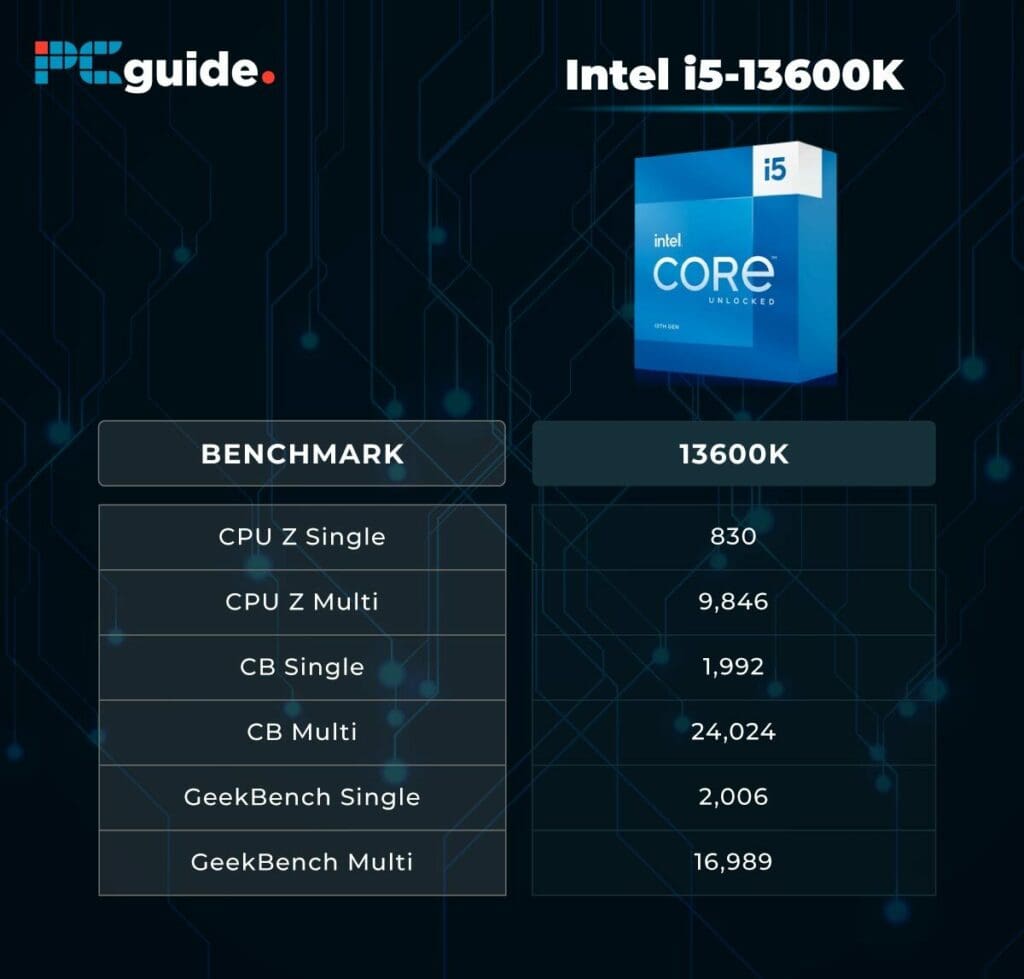
We tested the Intel CPU in a multitude of popular synthetic scenarios, these include CPU-Z, Cinebench R32, and Geekbench 5. Here’s how it did.
First up is CPU-z, the Core i5 scored 830 points in single-core benchmarks, and 9,846 in multi-core benchmarks. Starting the set off pretty strong.
In Cinebench, everyone’s favorite table and chair renderer, the i5 manages to get a single-core score of 1,992, and a multi-core score of 24,024.
In the geek bench, the impressive performance continues, the 13600K achieves a score of 2,006 in the single-core tests, and 16,989 in the multi-core scores. Which is nothing to shake a stick at.
Real-world performance
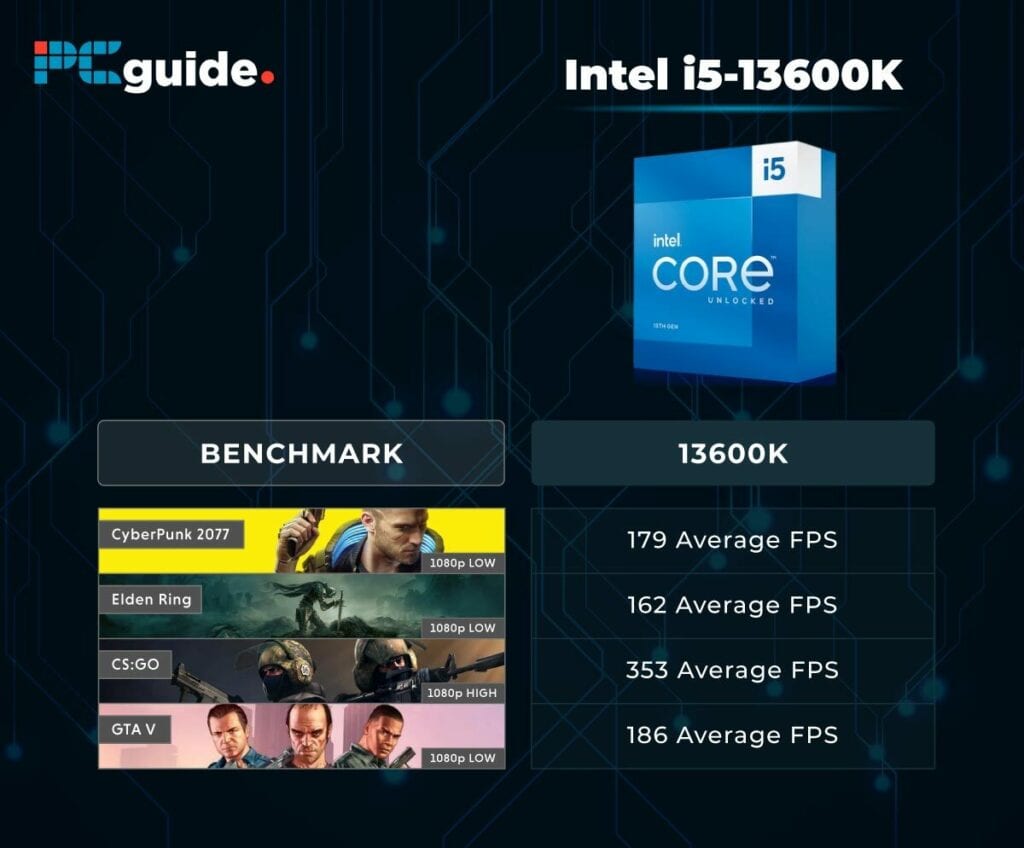
As far as real-world performance is concerned, we tested the i5 in 3 games. These were Cyberpunk 2077, Elden Ring, and CS2.
First up in Cyberpunk, the Core i5 managed an average FPS of 179FPS, the performance was smooth and there was no stuttering to speak of. The 13600k managed to keep up, despite being a “mid-level” CPU.
Next up, in Elden Ring, the Intel CPU manages an FPS average of 162FPS, however, you have to bear in mind that a mod is needed to uncap the FPS of Elden Ring, so there’s the possibility that results are affected. There was little to no stuttering while playing, and the 13th-generation CPU seemed to keep everything in order.
Lastly, we have CS2, which is the newest title on the list. In CS2, the 13600K brought home an FPS average of 343FPS. As with all online games, performance can vary based on internet connection and the conditions of the match (what’s going on) SO your performance may vary.
What do these benchmarks mean?
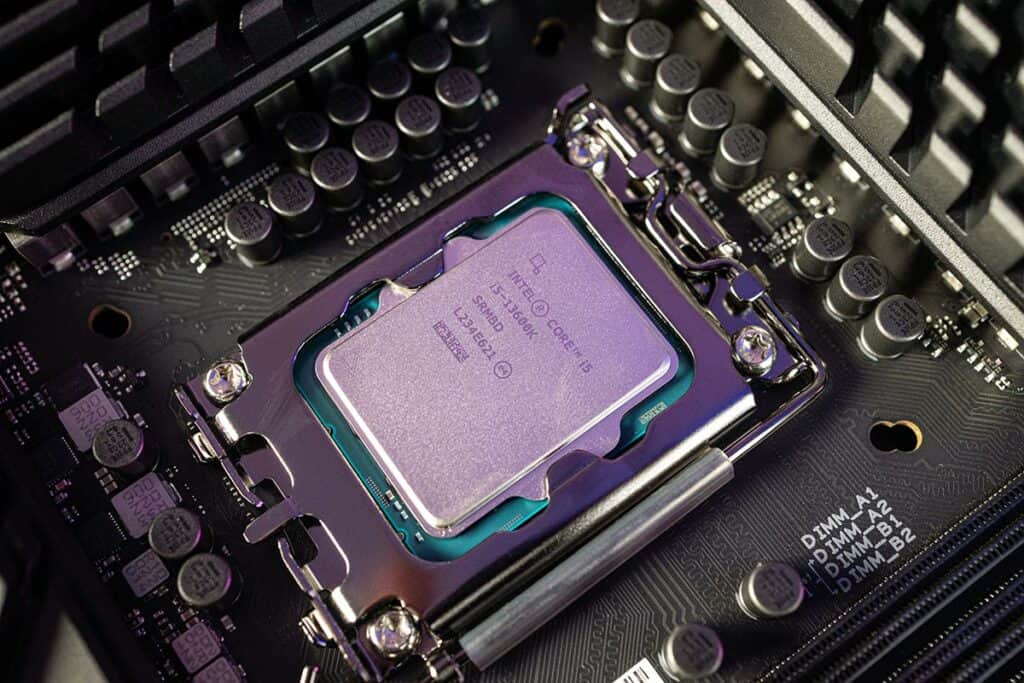
There’s plenty of information to be gained from benchmarking a CPU, but it might not always mean too much to those who aren’t as into tech as we are, so we’re going to break down what these benchmarks mean.
When we test the single-core abilities of a CPU, this, as the name suggests, is a test that assesses the capabilities of a single core, sometimes a core and a thread, depending on the workload. This is mostly used to assess the performance your CPU can manage in gaming workloads, as games still use very few cores.
Multi-core is a little different, the higher the score in multi-core benchmarks, the better your CPU does with all of its cores working together. This is used to assess the CPU performance in tougher workloads, such as rendering, simulations, and editing.
You can check out the Geekbench and Cinebench scores here to compare the results we have obtained to your current, or any other CPU, to get a better idea of performance. However, you need to bear in mind that these scores are usually the average of the higher scores achieved, and they’re public, so they will likely change over time.
Price
The Intel Core i5-13600K debuted in 2022 with a price point of $329 positioning it firmly in the entry-level camp as far as processors go, expectedly cheaper than Raptor Lake i7 and i9 processors. That’s only one side of the story, however, as you can commonly find the CPU as cheap as $275 through retailers such as Newegg, Best Buy, and Amazon. That’s a percentage saving of $54 (16%) which is to be expected as this chipset was replaced late last year by the i5-14600K.
Conclusion
The Core i5 13600K is a fantastic CPU for those looking to get a great performance CPU without breaking the bank. The compatibility with LAG 1700, and the fact that the socket is still in use, and will be for at least another year makes the 13th gen a great “it’ll do for now” CPU, should you want to upgrade later.
The very real performance means it excels in both Gaming and workstation tasks such as editing and rendering. We saw this when we explained the high Multi-core scores. The fact that you can pick up this CPU for as little as $275, or less if you’re lucky, makes this CPU an absolute score.

